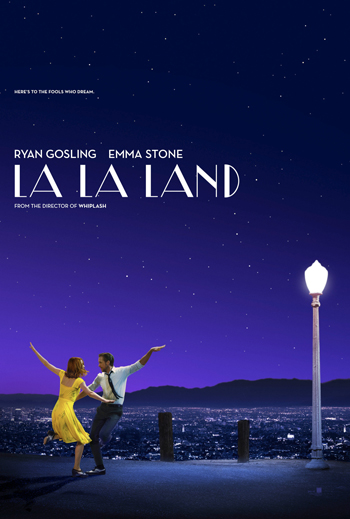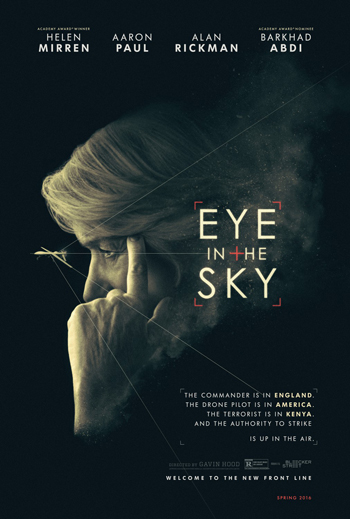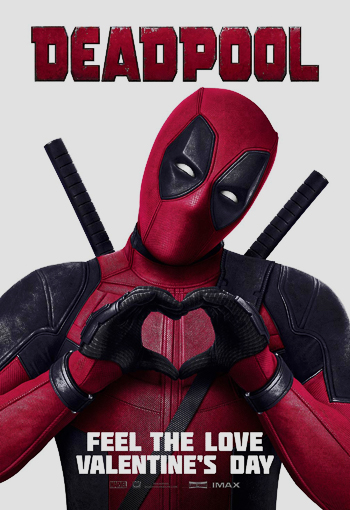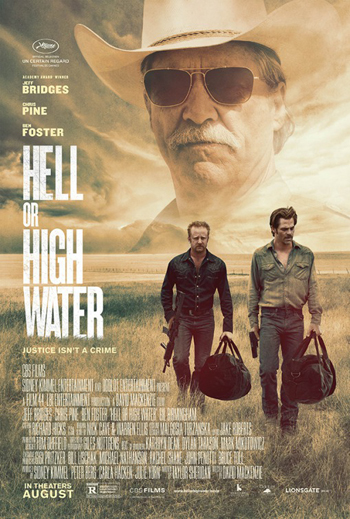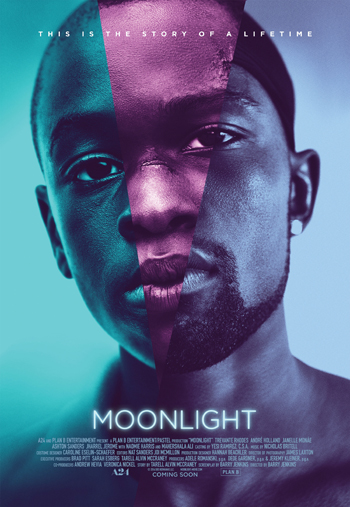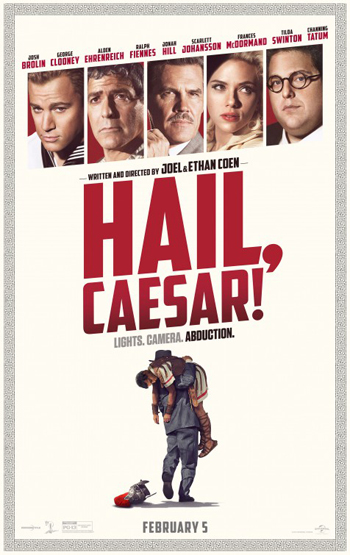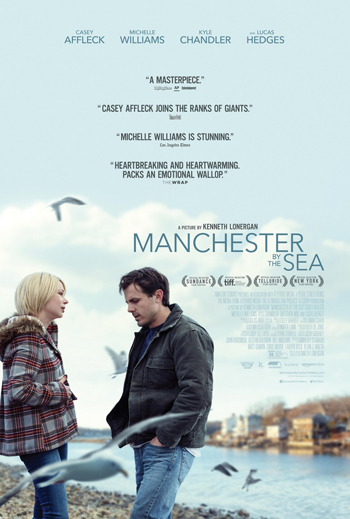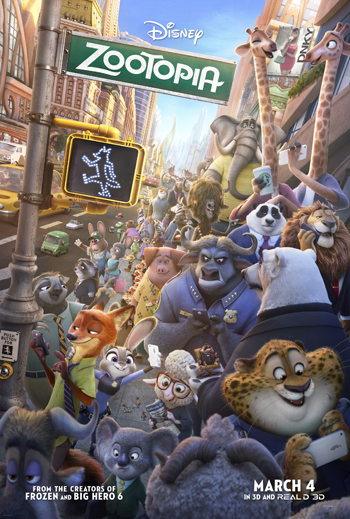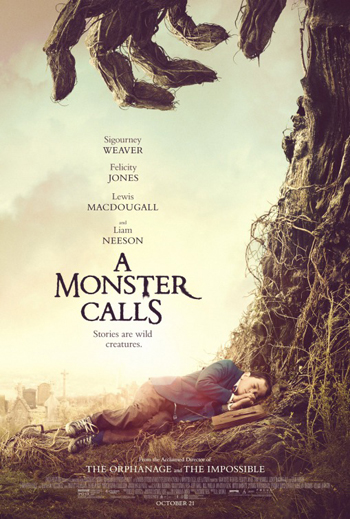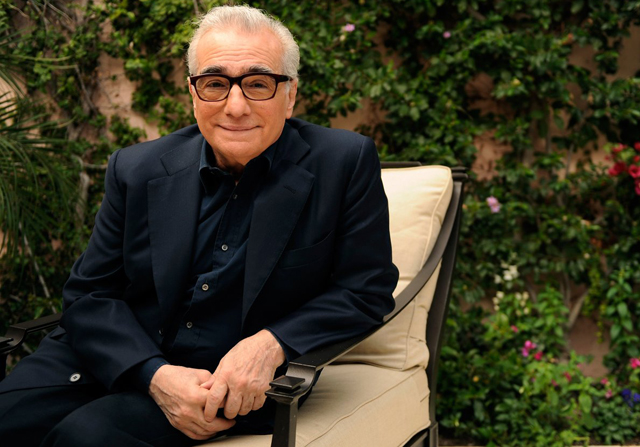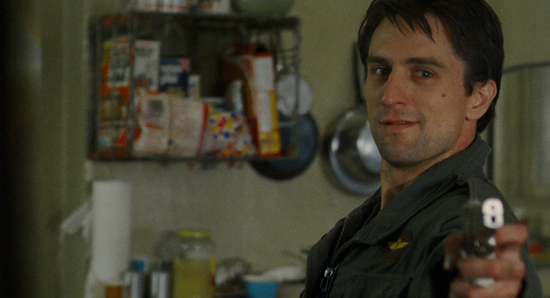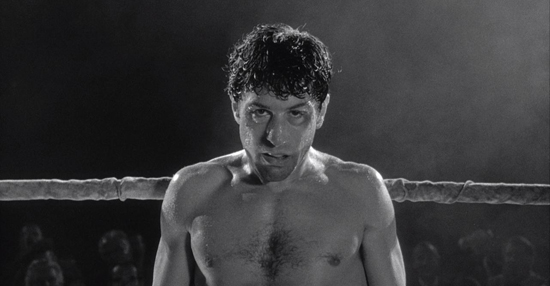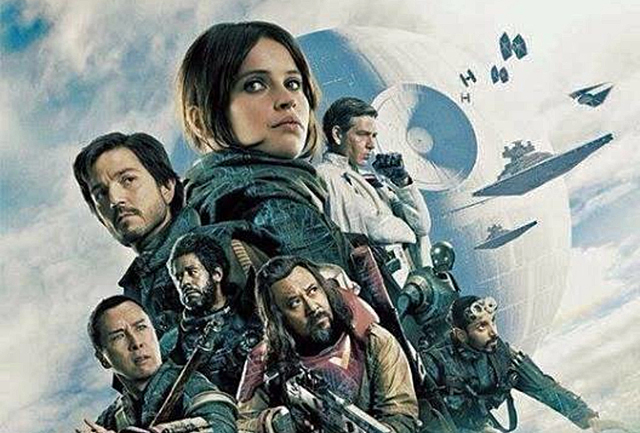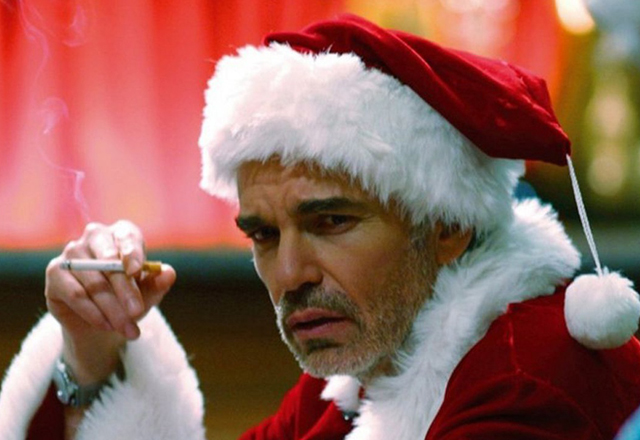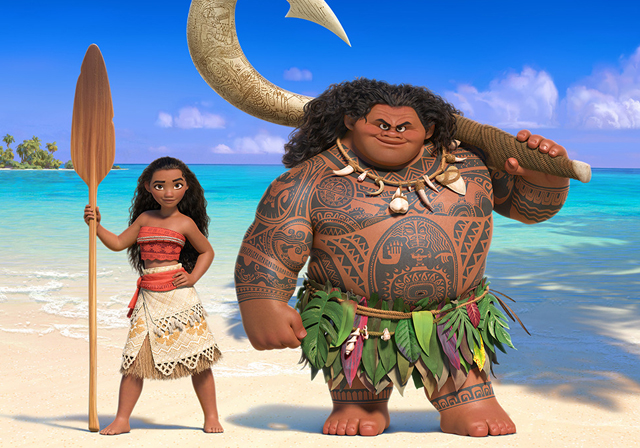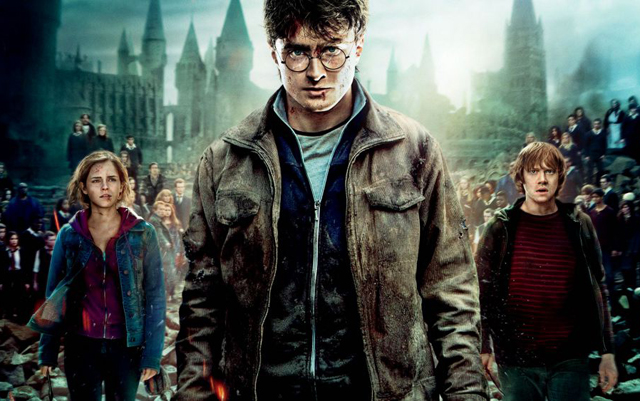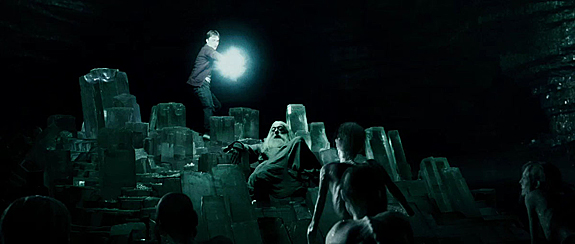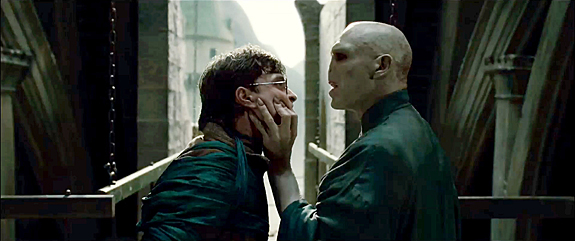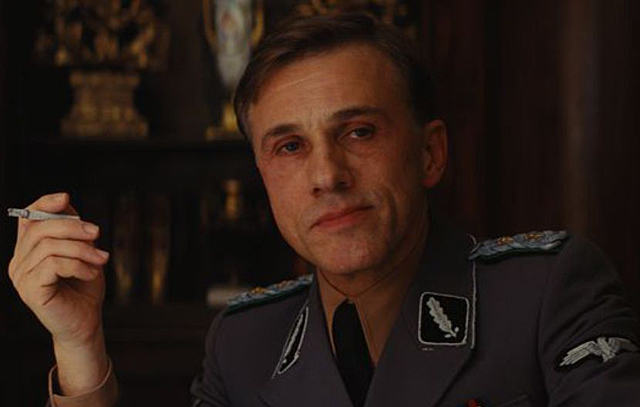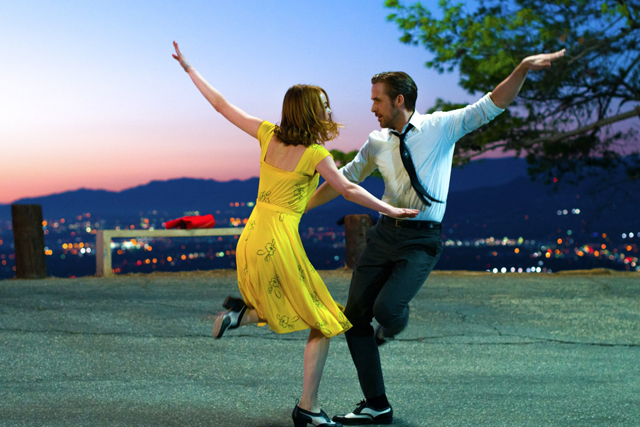
So, as we stand now in the first leg of the 2017 awards season, the movie that looks like a clear front runner for the top prize of the season, the Academy Award, appears to be Damien Chazelle’s La La Land. Truth be told, we won’t know for sure until the actual awards are handed out, but so far, it’s the movie that is breezing through all the awards thus far and is dominating. Which leads me to wonder, why this movie? Why is La La Land sweeping up so many awards this year. It’s not the typical Oscar style movie. Heavy dramas and message filled movies tend to be the awards favorites this time of year. But, La La Land is an upbeat musical comedy about struggling artists in the creative labyrinth that is Los Angeles, California, and a movie where no one dies and where both of the stars end up getting what they wanted in the end, more or less. Certainly, the fact that it’s a showbiz movie helps, as films like The Artist (2011) and Argo (2012) have shown that Hollywood loves to celebrate movies that cast a positive light on their industry. But, the movie is also becoming a hit with general audiences as well, and that tells me that another factor is fueling the popularity of La La Land, and that’s a strong reaction to retro style film-making. La La Land is a throwback to musicals of Hollywood’s Golden Era, but transplanted into a modern day setting. Like musicals of the past, the musical numbers become a natural extension of the story rather than a music video style interlude that cuts into the narrative, and is shot in long takes that help you to appreciate the production values and choreography. They are not new film-making techniques, but rather ones that have sat long dormant and only fell new and fresh because of their long absence.
In La La Land, the experiment works because it is clear that director Damien Chazelle has done his homework and studied the movies he’s trying to emulate very closely. It seems simple on the surface, but there is a lot more to making retro styles work in a new movie. Anyone can just copy a scene from an old film, but very few can actually make a new film feel old fashioned and have that come across as something new and revolutionary in the end. In many ways, it all comes down to the story you want to tell in the end. For Chazelle, he was interested in telling the story of people on the periphery of Hollywood fame, and just living day to day trying to prove that they can be a value to the world. The musical numbers are lavish, but they carry weight because of the way we identify with the characters and feel their struggle. That’s why when they break out into song, we share in the enthusiasm behind the experience. But even on the crafting side, it takes a sharp sense of your film-making craft to know how to make a film successfully retro. You have to know the intimate details such as the type of film stock used in filming, or the timing of the editing, or even just the choices in blocking a shot. It’s a rhythm of storytelling that helps to give it that retro feel. Production design, which creates the visual texture of a different era, becomes the very last element that makes a retro film feel old fashioned. What makes La La Land a remarkably retro movie is the fact that it’s retro in technique and not design. Chazelle’s film is a modern world brought to life with Hollywood magic. A musical number in the old Hollywood style can come off as ordinary when boxed into a prefabricated soundstage environment, but when transplanted to rush hour traffic on a Los Angeles freeway, then you’ve got the makings of something old becoming new again.
La La Land is not the first project to capitalize on collective cinematic nostalgia. There are plenty of other movies that hearken back to a bygone time and try to emulate the style of that era. But, it’s the practice of using the era’s limitations and film-making styles that actually defines this type of movie. It’s basically what separates a retro film from a period film. You can watch a period movie which puts extraordinary care and detail into the authenticity of the costumes and set design to recreate a different era, but it will still feel like a modern film regardless. This is because the film-making technology is of this era and not the one that the movie is set in. Aesthetically it can look old fashioned, but when it is shot on crisp digital photography, it will still be recognized by the viewer as a new movie. For a movie made today to truly feel like of another era, it must strip away all the cinematic shortcuts that technology has given us over the years and utilize techniques and technology that has been long out of use. For it’s part, La La Land does this by shooting on film, and in a film stock that is not as widely used today as it once was. Damien Chazelle chose to shoot the movie in the Cinemascope process, which was developed back in the 1950’s as a cheap and practical format for widescreen film-making. Today, most movies utilize a Panavision inter-positive, which allows the for the filmmaker to format the screen dimensions in post to their liking. Cinemascope is widely given as the name for the ratio of all widescreen movie (the standard of which is 2.40:1), but the original film based Cinemascope was actually wider than this (at 2.55:1) and is far more dynamic at capturing screen depth than modern day Panavision. It was an especially popular format for the musicals of the 50’s, which I’m sure is something that Chazelle took notice of. While most moviegoers probably will never know any difference between film stock formats, subconsciously it does leave an impression and helps to make the final film feel retro purely through the very film stock used in it’s making.
Chazelle is one of a number of filmmakers that have returned to old techniques and film equipment to recreate styles of the past. One filmmaker in particular that has gone out of his way to not only use old equipment, but also champion it in his promotion of his movies is Quentin Tarantino. Tarantino is a filmmaker with modern sensibilities, but he is also a director with an extensive knowledge of old Hollywood film-making and a strong desire to relive those styles in the work that he does. He’s a man raised on watching exploitation films and international cinema, and how the sometimes dingy and haphazard presentations of these movies in grindhouse theaters sometimes added to the overall experience. It’s a decidedly different kind of retro film-making that Tarantino likes to exploit in his own work than what we see in La La Land, but it’s no less accomplished with a lot of care and detail. Perhaps his greatest expression of this was in the double feature project that he created with his friend and collaborator Robert Rodriquez with Grindhouse (2007). The over three hour presentation featured two feature length films; Planet Terror, directed by Rodriquez and Death Proof, directed by Tarantino. While both obviously were meant to parody their selective grindhouse genre flicks, there was also a strong emphasis to try to capture the physical look of those types of movies as well. Digital scratches were added to the finished film, to make it look like a film print that would have played in one of those old grindhouse theaters, where special care of the film prints was probably never taken. Not only that, but color grading was purposely washed out for a lot of scenes to further give the movie an old tattered look to it. For Tarantino, he makes a strong effort to make you aware of the retro look of his movies and it’s become a staple of his film-making style. Even in a more polished film like The Hateful Eight (2015), he made a big deal about shooting the movie in the extremely wide and rarely used Ultra Panavision format, and having it screened in 70MM film across the country. For him, presentation is just as key to making a film feel retro as anything else.
What I find interesting about the use of retro style film-making is how it often is dictated by the maturity of the filmmaker and the audience they are trying to reach. As different generations come of age, they notice that movies that get made in their adulthood often reflect the kind of products they were familiar with in their childhood. What was Saturday morning material in our youth are now the box office kings of today. And this is a cycle that keeps refreshing every generation or so. You see this with hit films today based on Transformers, Teenage Mutant Ninja Turtles, and Alvin and the Chipmunks. And why these films? Because they are all based off of shows that were popular during the 1980’s, and children born and raised during that decade are now hitting their thirties and are the ones both getting these movies green-lit, and are paying to see them in huge numbers. You can pretty much see a correlation in every decade with another past era that suddenly comes into vogue based on a collective nostalgia. In the 90’s and early 2000’s, we saw big screen adaptations of the kind of cartoon entertainment that our parents grew up with in the 1960’s and 70’s, with The Flintstones (1994), George of the Jungle (1997), and Scooby Doo (2002). And going further back, you see a nostalgic revival of the 1950’s in the 1970’s with shows like Happy Days and movies like American Graffiti (1973). Now that I brought up a project by George Lucas, I can also see how Star Wars (1977) is a retro throwback to the 1950’s, when sci-fi serials were a staple of the industry. The iconic opening crawl is lifted directly from those same serials. Essentially, time dictates the nostalgic value on things, but it doesn’t always reflect that way in deliberately retro projects. Damien Chazelle is only 31 years old, but the retro style he’s trying to capture in La La Land hearkens back way before his lifespan. It’s an acquired appreciation for that era for him, which probably could’ve been built from film studies during his years in film school. But, what a filmmaker values in the nostalgia of this film-making may not always translate for an audience.
For a retro style film to work, there has to be a shared interest between the filmmaker and the audience. Sometimes a director will put extraordinary detail into capturing the look and feel of a retro film and no one will watch it, because of the disconnect between the art and the demand for that art. A perfect example of this kind of project not working as well as planned was an ambitious film by acclaimed director Steven Soderbergh called The Good German (2006). Soderbergh set out to recreate the aesthetic look of Hollywood war era films by shooting the movie entirely in black and white, mostly on soundstage sets and on a backlot, and even constricting the movie to a full frame aspect ratio that was standard of that era (approximately 1.33:1). The George Clooney and Cate Blanchett headlined movie even had a marketing campaigned modeled after those of movies in that era, like Casablanca (1943), Mrs. Miniver (1942) and Only Angels Have Wings (1939). It was clear that Soderbergh clearly wanted to evoke those movies in his own, and have the retro feel of his movie be the drawing factor behind it. The only problem is that unlike all those other movies, less care was put into the story. The film is so concerned with the aesthetic, it falters with the narrative and just ends up being this pretty but boring thing. One can’t fault Soderbergh’s devotion to the project, but for movies like this to work, the narrative must work in balance with the visuals. That’s the strength with La La Land. It puts a lot more attention towards the narrative of two people falling in and out of love and makes the visual flair a reward for the audience involved in it’s story, rather than be a distraction.
But, when you look at movies that work well with retro fimmaking and those that don’t, you have to wonder what determines the response that the audience will eventually give to these movies. The cyclical nature of nostalgia has something to do with it, but there are other factors that make it possible for audiences to embrace something retro. Sometimes, it’s the escapism of returning to something familiar that has that effect. I find it easy to see why La La Land is becoming the hand down favorite for all of the accolades for 2016, because if you lived through 2016 and saw how rough of a year it was for many people, you would want to escape into a idealized world of music and song too. La La Land is cinematic medicine for a shattered world, and Chazelle’s musical is hitting just at the right time. It not only is entertaining, but it was gives us the reminder of what a Hollywood movie can be to it’s audience, and how it can lift us up. If the year had gone a little different, the movie may have come across as naive and hollow. Timing is everything for a retro film or any project to hit it’s mark, and often times, it’s built upon years of disappointment for an audience. One genre in particular that has really benefited as a whole from a more retro-centric sensibility is the Horror genre. After getting watered down in the post-Blair Witch, jump scare heavy era of bland Horror film-making, we are seeing a revival of the kind of thrillers that put the genre on the map in the 1970’s. You can see this in movies like James Wan’s The Conjuring (2013) or the critically acclaimed It Follows (2014), both of which draw more on atmosphere and scare audiences more with what’s not seen that what is seen. And on television, we have a show like the Duffer Brothers’ Stranger Things, which is retro to it’s very core, and in the process, feels refreshing. In the end, retro film-making becomes a statement against mediocrity, and looking to the past to find better answers for today.
La La Land, more than anything, has benefited from being the right movie at the right time. We as a culture are in an uncertain place, and that is allowing something that is so self-assuredly positive to connect with us at this moment. You have to admire the crafting behind the film, with so much attention devoted to making the musical feel retro without becoming naively old fashioned. But, what I like best about La La Land is that it represents the value that a deep knowledge of film and film history can have. I love the fact that Chazelle is keeping some tried and true tricks of the trade alive with his movie, especially the practice of shooting on actual film. Along with the likes of Quentin Tarantino and Christopher Nolan, there are only a handful of filmmakers that still use film stock and Chazelle is keeping a valuable legacy alive because of this. These filmmakers also show that retro film-making also represents a sign of quality in their work that normally wouldn’t be seen. Modern film-making offers us a lot of shortcuts, but by tying our hands down and working within restrictive limitations, it provides us with some interesting creative avenues to try to overcome them and make the product of our efforts seem much more interesting as a result. Period movies are by no means lazy efforts, but they will always feel like a modern movie because of the modern tools that went into their creation. Take those away, and you can actually give your movie a more timeless feel that feels exactly of a different era. That is what La La Land is in the end, a movie set today that feels like it was made in another era. If it does win the Best Picture award for this year, it is an understandable victory. Like a fellow Awards juggernaut, 2011’s The Artist, an earnest experiment in old tricks can find it’s audience and make the old feel like new again by adhering to the conviction of it’s presentation and endearing it with a timeless story worthy of telling. In the end, films last forever, so it’s important to give a movie a reason to stay around that long.

